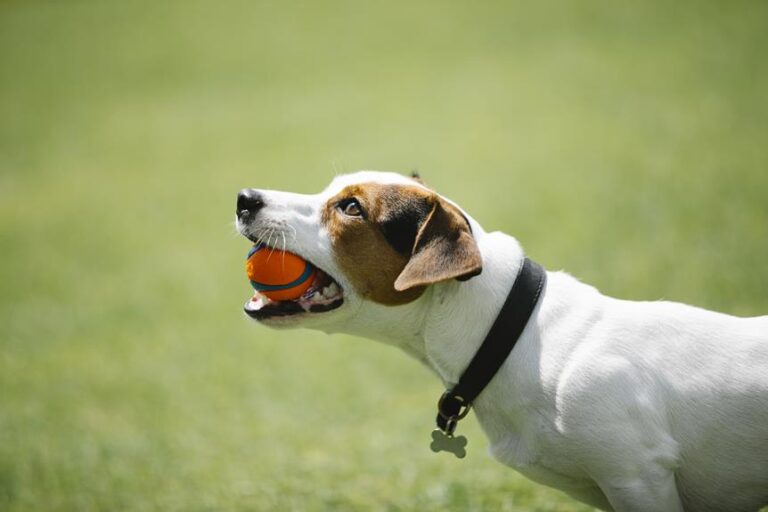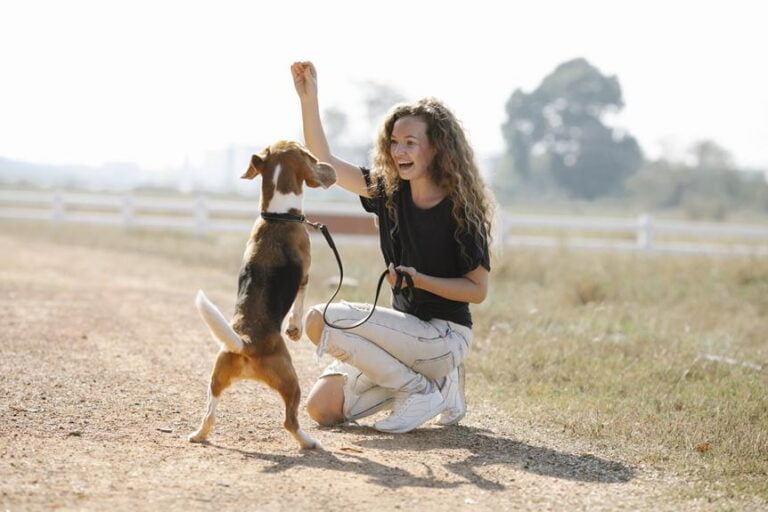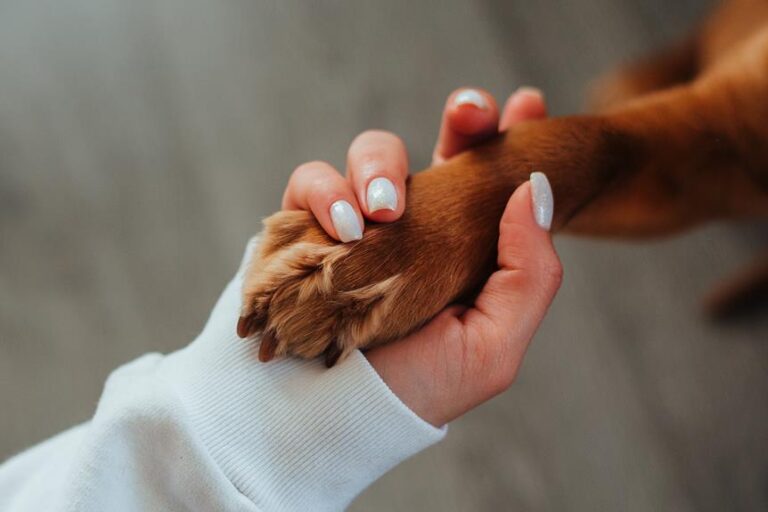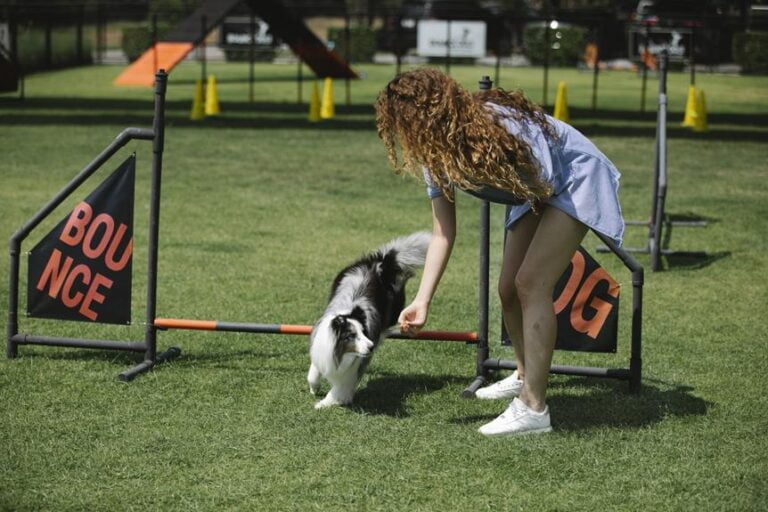8 Clicker Training Techniques to Improve Dog Obedience and Behavior
Discover the dynamic and diverse world of dog training with our comprehensive guide to 8 clicker training techniques to improve your canine companion’s obedience and behavior.
From precision with timing and consistency to the power of positive reinforcement, we delve into the transformative potential of target training, shaping behaviour, capturing behaviour, lure and reward, back chaining technique, and discrimination training.
Unlock the secrets to effective communication and see remarkable results as you embark on this enlightening journey towards a well-behaved and happy dog.
Key Takeaways
- Timing and consistency are crucial in clicker training to help dogs associate the click with the desired behaviour and create clear communication.
- Positive reinforcement is an effective training method that rewards dogs for exhibiting desired behaviours, leading to improved obedience and a stronger bond.
- Target training facilitates clear communication and helps build focus and impulse control in dogs, making it effective for addressing behaviour problems.
- Shaping behaviour involves breaking down complex behaviours into smaller steps, requiring patience and consistency to strengthen the desired behaviour over time.
Timing and Consistency
When it comes to clicker training techniques, timing and consistency play a crucial role in improving dog obedience and behaviour. Timing refers to the precise moment when the clicker is used to mark a desired behaviour, while consistency involves maintaining a uniform approach throughout the training process.
In clicker training, timing is essential because it helps the dog associate the click with the specific behaviour you want to reinforce. The clicker acts as a bridge between the desired behaviour and the reward that follows. By clicking at the exact moment the dog performs the desired action, you create a clear and immediate connection between the behaviour and the reward.
Consistency is equally important in clicker training. Dogs thrive on routine and predictability, so it is vital to establish consistent rules and expectations. Consistency in clicker training means using the clicker and rewarding consistently for desired behaviours and ignoring or redirecting unwanted behaviours consistently as well. By doing so, you provide clear communication to the dog, making it easier for them to understand and learn what is expected of them.
Positive Reinforcement
Now, let’s delve into the subtopic of Positive Reinforcement by exploring how this technique can further enhance dog obedience and behaviour.
Positive reinforcement is a highly effective training method that involves rewarding dogs for exhibiting desired behaviours. By using positive reinforcement techniques, dog owners and trainers can create a positive association between the desired behaviour and a reward, such as treats, praise, or playtime. This technique helps to motivate dogs and encourages them to repeat the desired behaviour in order to receive the reward.
Here are three key benefits of using positive reinforcement in dog training:
- Improved obedience: Positive reinforcement helps to reinforce and strengthen desired behaviours in dogs. By rewarding them when they exhibit the desired behaviour, dogs learn to associate the behaviour with a positive outcome, making them more likely to repeat the behaviour in the future.
- Enhanced focus and attention: Dogs are highly motivated by rewards, and positive reinforcement can help improve their focus and attention during training sessions. By consistently rewarding desired behaviours, dogs learn to pay attention and actively engage in the training process.
- Stronger bond and trust: Positive reinforcement techniques create a positive and rewarding experience for dogs, which helps to build a stronger bond and trust between the dog and its owner or trainer. This bond is crucial for effective communication and cooperation during training.
Target Training
To begin the discussion on the subtopic of target training, let’s explore how this technique can be used to improve dog obedience and behaviour.
Target training involves teaching a dog to touch or follow a specific target, such as a stick or a mat, with their nose or paw. This technique can be highly effective in shaping desired behaviours and improving overall obedience.
One of the key benefits of target training is that it allows for clear communication between the trainer and the dog. By using a target, the trainer can direct the dog’s attention and movements, making it easier to teach specific commands and behaviours. For example, if the goal is to teach the dog to sit, the trainer can use a target to guide the dog into the desired position.
Target training also helps to build a dog’s focus and impulse control. By requiring the dog to touch or follow a target, they learn to concentrate on the task at hand and resist distractions. This can be particularly useful in situations where the dog needs to remain calm and obedient, such as during walks or when encountering other animals or people.
Additionally, target training can be used to address behaviour problems. For instance, if a dog tends to jump on people, the trainer can use a target to redirect the dog’s attention and teach them to perform an alternative behaviour, such as sitting or touching the target with their paw.
Shaping Behaviour
The next technique to explore in improving dog obedience and behaviour is the process of shaping behaviour. Shaping behaviour is a method that involves breaking down complex behaviours into smaller, more manageable steps. By reinforcing each step along the way, we can gradually shape the desired behaviour.
Here are three key points to keep in mind when using shaping behaviour:
- Start with the end goal in mind: Before you begin shaping behaviour, clearly define the final behaviour you want to achieve. Having a clear picture of the desired outcome will help guide your training sessions and ensure consistency.
- Break it down: Once you have identified the end goal, break it down into smaller, achievable steps. Start by reinforcing any behaviour that is even remotely close to the desired behaviour. As your dog becomes more proficient, raise the criteria gradually.
- Be patient and consistent: Shaping behaviour takes time and patience. Remember to be consistent with your criteria and reinforcement. Consistency will help your dog understand what is expected of them and accelerate the learning process.
Capturing Behavior
One effective technique in improving dog obedience and behaviour is capturing behaviour, which involves observing and rewarding your dog for naturally exhibiting desired behaviours. Instead of actively shaping the behaviour by providing cues or prompts, capturing behaviour takes advantage of the dog’s natural tendencies and instincts. This technique can be particularly useful for teaching behaviours that are already part of the dog’s repertoire but may not be consistently offered.
To capture behaviour, you need to carefully observe your dog and identify moments when they naturally display the desired behaviour. Once you notice the behaviour, use a clicker or a verbal marker to mark the behaviour and immediately follow it with a reward such as a treat or praise. By consistently rewarding the behaviour, you can reinforce and strengthen it over time.
It is important to note that capturing behaviour requires patience and keen observation skills. You need to be ready to reward your dog as soon as they perform the desired behaviour. Additionally, it is essential to have a clear understanding of the specific behaviour you want to capture and be consistent in rewarding only that behaviour.
Here is an example of how capturing behaviour can be applied in training a dog to sit:
| Behavior | Marker | Reward |
|---|---|---|
| Dog sits | Click | Treat |
Lure and Reward
Lure and reward is another effective technique that builds upon the concept of capturing behaviour to further improve dog obedience and behaviour. This technique involves using a lure, such as a treat or a toy, to guide the dog into performing a desired behaviour, and then rewarding the dog for successfully completing the behaviour.
Here are three key points to keep in mind when using lure and reward:
- Choose an enticing lure: When using lure and reward, it is important to select a lure that is highly motivating for your dog. This could be a tasty treat, a favourite toy, or even a specific hand signal. The lure should be something that your dog finds irresistible and is willing to work for.
- Use the lure to guide the behaviour: Once you have chosen a lure, use it to guide your dog into performing the desired behaviour. For example, if you want your dog to sit, you can hold a treat above their head and slowly move it backwards, encouraging them to lower their rear end into a seated position. As soon as they complete the behaviour, reward them with a treat.
- Gradually phase out the lure: The ultimate goal of lure and reward is to teach your dog to perform the behaviour without needing the lure. Once your dog is consistently performing the behaviour with the lure, you can start to fade it out gradually. This means using the lure less frequently and eventually relying solely on verbal cues or hand signals to prompt the behaviour.
Backchaining Technique
To implement the back chaining technique, trainers should begin by breaking down the desired behaviour into individual steps. This technique involves teaching the last step of the behaviour first, then gradually adding the previous steps until the entire behaviour is complete. Back chaining is an effective method because it leverages the dog’s natural inclination to finish a behaviour. By starting with the end goal and working backwards, dogs are more likely to understand and perform the behaviour correctly.
Here is an example of how the back chaining technique can be used to teach a dog to jump through a hoop:
| Step | Description |
|---|---|
| Step 1 | Show the dog the hoop and reward them for approaching it. |
| Step 2 | Once the dog is comfortable approaching the hoop, reward them for putting their head through the hoop. |
| Step 3 | Gradually increase the criteria, rewarding the dog for moving their entire body through the hoop. |
| Step 4 | Finally, reward the dog for successfully jumping through the hoop.
Discrimination Training
When implementing discrimination training, trainers utilize a variety of stimuli to teach dogs to differentiate between different cues or objects. This type of training is particularly useful in situations where dogs need to respond to specific cues or objects while ignoring others. Here are three techniques commonly used in discrimination training:
- Visual Discrimination: In this technique, dogs are trained to respond to specific visual cues. For example, a trainer may use different coloured objects and teach the dog to touch only the objects of a certain colour. The dog is rewarded for correctly discriminating between the different colours.
- Auditory Discrimination: Dogs can also be trained to differentiate between different sounds or tones. Trainers may use clickers or other sound-producing devices to teach the dog to respond to specific tones or patterns. The dog is rewarded for responding to the correct auditory cue.
- Scent Discrimination: Dogs have an exceptional sense of smell, making scent discrimination training highly effective. Trainers can teach dogs to identify and locate specific scents, such as certain drugs or explosives. The dog is rewarded for correctly identifying the target scent.
Frequently Asked Questions
How Long Does It Usually Take to See Results Using Clicker Training Techniques?
The time it takes to see results using clicker training techniques can vary depending on various factors such as the dog’s age, breed, temperament, and previous training experiences. Some dogs may respond quickly and show improvements within a few sessions, while others may take longer to grasp the concept.
Patience, consistency, and positive reinforcement are key to achieving desired results. It is important to set realistic expectations and understand that each dog learns at their own pace.
Can Clicker Training Be Used on Older Dogs or Is It Only Effective With Puppies?
Clicker training can be effective for dogs of all ages, including older dogs. While some may believe that older dogs are set in their ways and less responsive to training, clicker training can still be beneficial.
The key is to be patient and consistent with the training process. Older dogs may require more time and repetition to learn new behaviours, but with proper training techniques and positive reinforcement, they can still make significant improvements in their obedience and behaviour.
Are There Any Specific Breeds or Types of Dogs That Clicker Training Works Best For?
Clicker training is a highly effective method for improving dog obedience and behaviour. When considering specific breeds or types of dogs that clicker training works best for, it is important to note that clicker training can be utilized with any breed or age of the dog. The key to successful clicker training lies in the consistency and positive reinforcement provided.
Can Clicker Training Techniques Be Used to Address Specific Behavior Problems, Such as Aggression or Separation Anxiety?
Clicker training techniques have been proven effective in addressing specific behaviour problems in dogs, such as aggression or separation anxiety. By associating the sound of the clicker with positive reinforcement, dogs can learn to modify their behaviour in response to specific cues.
This method has been successful in improving obedience and reducing problem behaviours. The use of clicker training can provide a clear and consistent communication channel between the dog and the trainer, resulting in improved obedience and a more well-behaved dog.
Is It Possible to Use Clicker Training to Teach More Complex Commands or Tricks, Beyond Basic Obedience Training?
Yes, clicker training can be used to teach more complex commands and tricks beyond basic obedience training.
The clicker serves as a precise marker to indicate the desired behaviour, making it easier for the dog to understand what is being rewarded.
This allows for the shaping of behaviours step by step, gradually building up to more complex actions.
Conclusion
In conclusion, clicker training can be a highly effective method for improving dog obedience and behaviour. By utilizing techniques such as timing and consistency, positive reinforcement, target training, and shaping behaviour, dog owners can establish clear communication and build strong bonds with their furry companions.
Additionally, the use of capturing behaviour, lure and reward, back chaining technique, and discrimination training can further enhance the training process.
With dedication and patience, clicker training can transform your dog into a well-behaved and obedient companion.







